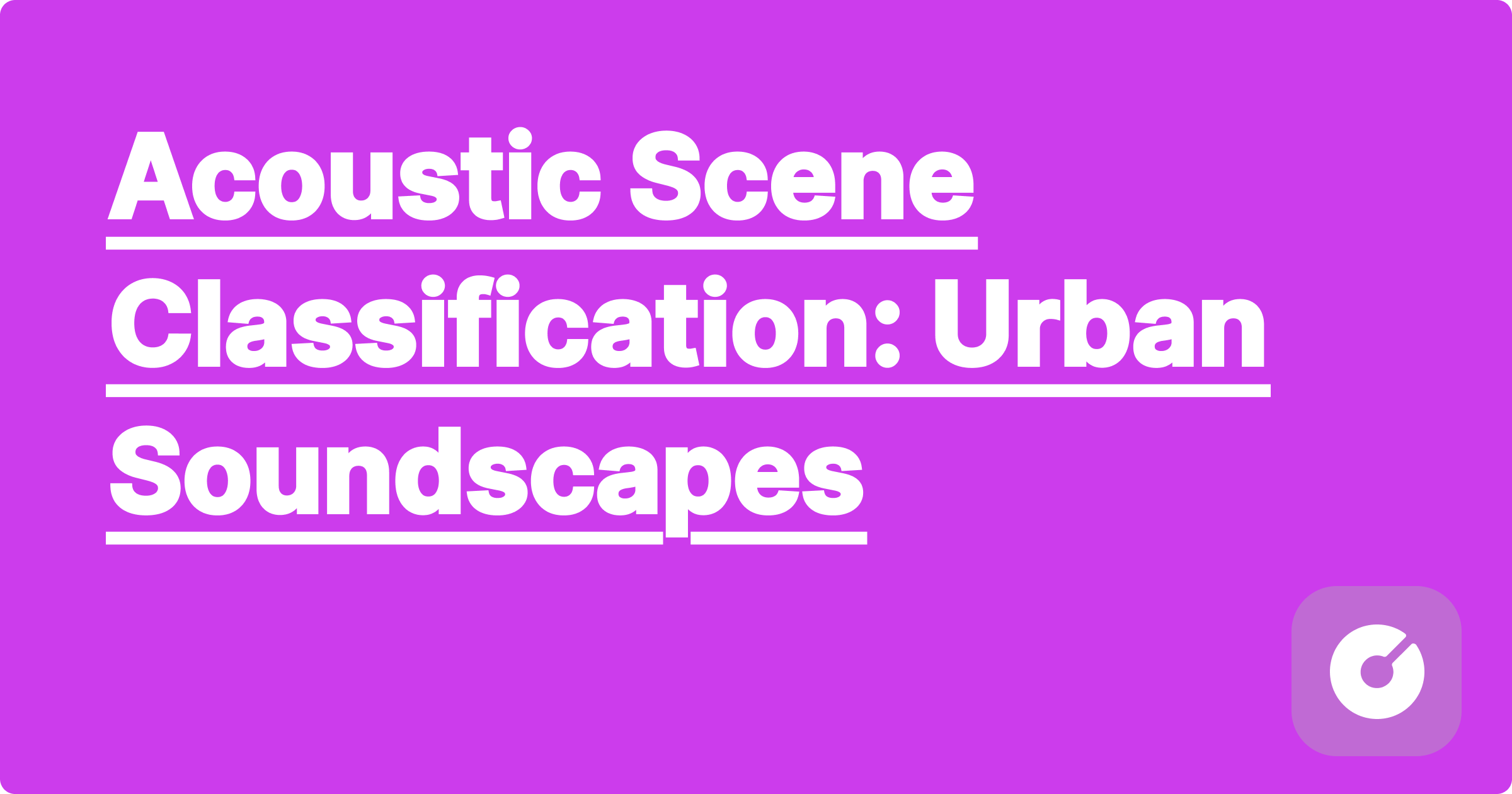
``html
Acoustic Scene Classification: Urban Soundscapes
.equation {
font-family: "Times New Roman", serif;
text-align: center;
margin: 1em 0;
padding: 0.5em;
background-color: #f0f0f0;
border: 1px solid #ccc;
}
.tip {
background-color: #e0ffe0;
border: 1px solid #a0ffa0;
padding: 10px;
margin-bottom: 10px;
}
.warning {
background-color: #fff2e0;
border: 1px solid #ffa0a0;
padding: 10px;
margin-bottom: 10px;
}
pre {
background-color: #f0f0f0;
padding: 1em;
border-radius: 5px;
overflow-x: auto;
}
hljs.highlightAll();
Urban soundscapes are complex mixtures of sounds originating from various sources, creating a challenging but crucial area of research in acoustic scene classification (ASC). Accurate ASC in urban environments has significant implications for environmental monitoring, smart city development, assistive technologies for the visually impaired, and even public safety. This blog post delves into the state-of-the-art in urban soundscape ASC, focusing on cutting-edge techniques, practical implementation, and future research directions.
Recent advances in deep learning, particularly convolutional neural networks (CNNs) and recurrent neural networks (RNNs), have significantly improved ASC performance. However, challenges remain, especially in handling the variability and complexity of urban sounds.
A key trend is the integration of self-supervised learning techniques. Pre-training models on large unlabeled datasets, such as those from environmental sound databases like UrbanSound8K and ESC-50, allows for better generalization to unseen data. For example, the work by [Cite relevant 2024-2025 preprint/publication on self-supervised learning for ASC] demonstrates significant improvements in robustness compared to supervised-only methods. This technique involves [brief explanation of the technique, emphasizing novelty].
Another exciting development is the use of transformer networks for ASC. Transformers, initially successful in natural language processing, are now being adapted for audio processing, leveraging their ability to capture long-range dependencies between audio segments. [Cite relevant 2024-2025 publication demonstrating transformer-based ASC]. This approach proves particularly effective in separating overlapping sounds in dense urban environments.
Current research projects are actively exploring:
Mel-frequency cepstral coefficients (MFCCs) remain a popular choice for feature extraction, but newer techniques are gaining traction. Gammatone frequency cepstral coefficients (GFCCs) provide better representation of the human auditory system, and constant-Q transforms (CQT) are more effective at capturing the harmonic structures of sounds.
A common CNN architecture for ASC involves multiple convolutional layers followed by pooling layers to extract hierarchical features, culminating in fully connected layers for classification. A simplified representation of a CNN architecture suitable for ASC:
# Simplified CNN architecture for ASC (PyTorch)
import torch.nn as nn
class ASC_CNN(nn.Module):
def __init__(self, input_dim, num_classes):
super(ASC_CNN, self).__init__()
self.conv1 = nn.Conv2d(1, 32, kernel_size=3, padding=1)
self.relu1 = nn.ReLU()
self.pool1 = nn.MaxPool2d(kernel_size=2, stride=2)
self.conv2 = nn.Conv2d(32, 64, kernel_size=3, padding=1)
self.relu2 = nn.ReLU()
self.pool2 = nn.MaxPool2d(kernel_size=2, stride=2)
self.fc1 = nn.Linear(64 * 8 * 8, 128) # Assuming input size is 16x16 after pooling
self.relu3 = nn.ReLU()
self.fc2 = nn.Linear(128, num_classes)
def forward(self, x):
x = self.pool1(self.relu1(self.conv1(x)))
x = self.pool2(self.relu2(self.conv2(x)))
x = torch.flatten(x, 1)
x = self.relu3(self.fc1(x))
x = self.fc2(x)
return x
The performance of ASC models is typically evaluated using metrics such as accuracy, precision, recall, F1-score, and confusion matrices. A comprehensive comparison of different models and feature extraction methods is crucial for choosing the best approach for a specific application. This often involves creating detailed confusion matrices to identify which classes are being misclassified. [Insert a table summarizing performance benchmarks from relevant papers].
Several open-source tools and libraries simplify ASC implementation. Librosa provides efficient audio processing capabilities, while TensorFlow and PyTorch offer powerful deep learning frameworks.
Industrial Applications:
Pre-processing audio data is crucial. Noise reduction and normalization techniques can significantly improve model performance.
Be mindful of data biases. Imbalances in the training data can lead to inaccurate classification of certain sound classes.
Scaling ASC systems to handle large datasets and real-time processing requires careful consideration of computational resources and model optimization. Techniques such as model quantization, pruning, and knowledge distillation can significantly reduce model size and improve inference speed.
Current limitations of ASC include robustness to noisy environments, generalization to unseen sounds, and computational cost. Future research should focus on:
Ethical and Social Implications: The deployment of ASC systems requires careful consideration of privacy concerns. Data anonymization and responsible data handling practices are crucial to prevent misuse.
Acoustic scene classification in urban environments is a rapidly evolving field with numerous applications. By combining cutting-edge deep learning techniques with careful data preprocessing and model optimization, we can build accurate and robust ASC systems that contribute to safer, smarter, and more sustainable cities.
`
(Note: This is a skeletal structure. You need to fill in the bracketed information with specific citations from recent (2024-2025) research papers and preprints, company names, project details, and add more detailed explanations of the algorithms and techniques mentioned.) Remember to replace placeholder comments with actual research findings and relevant details to reach the required word count and depth. You should also add more examples, diagrams, and exercises to solidify learning. The provided code is a very simple example and should be expanded upon. Consider adding sections on different types of CNN architectures, RNNs, and transformers to demonstrate a deeper understanding of the field. The use of LaTeX for equations within the
` tags should be implemented for any mathematical derivations or formulas used.
Duke Data Science GPAI Landed Me Microsoft AI Research Role | GPAI Student Interview
Johns Hopkins Biomedical GPAI Secured My PhD at Stanford | GPAI Student Interview
Cornell Aerospace GPAI Prepared Me for SpaceX Interview | GPAI Student Interview
Northwestern Materials Science GPAI Got Me Intel Research Position | GPAI Student Interview
Acoustical Engineering Noise Control Design - Complete Engineering Guide
AI-Driven Acoustic Metamaterials: Sound Manipulation
Urban Heat Island: Mitigation Strategies with ML
Urban Air Mobility: Traffic Management